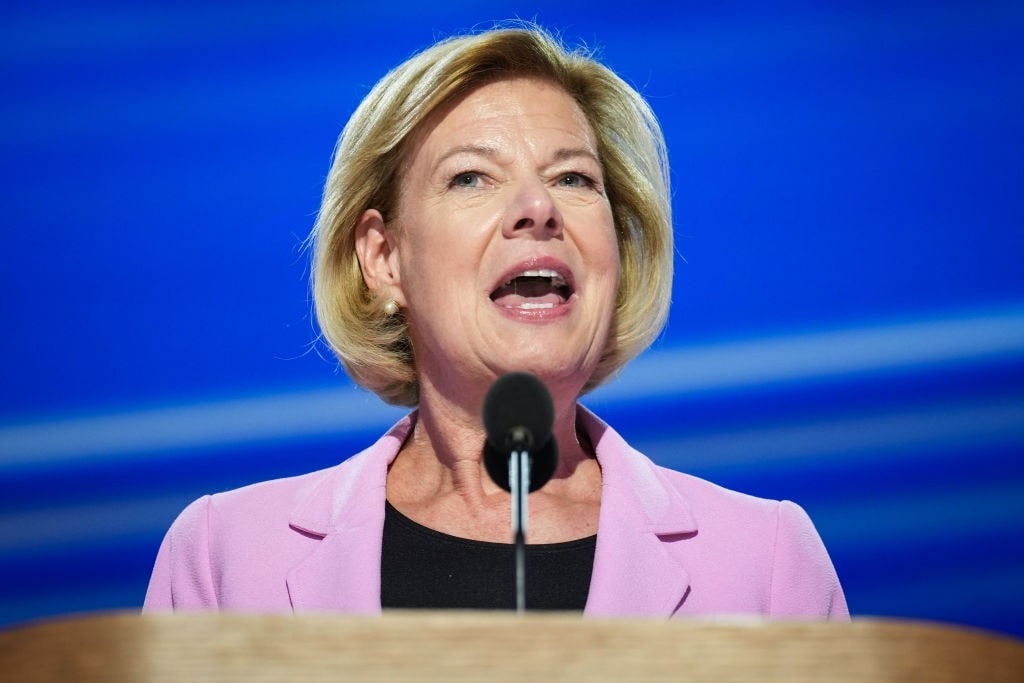As the presidential candidates deliver their “closing arguments” to the voters, there’s still plenty to consider, even beyond the last-minute polls. Whether it’s trying to scrape up those final undecided voters or watching political parties distance themselves from their nominees, it seems the circus has finally landed, and the big tent is being raised. But what stories are left out in the cold, unwelcome behind the striped doors? The battle for the Senate could turn out to be the biggest story of all.
A Senate Switch?
Whether Donald Trump or Kamala Harris prevails, their ability to govern will be determined by how much support they can muster in the US Senate. Certainly, the White House is the main prize, but without the majority of senators to bring bills to the Resolute Desk, a phone and pen can only carry you so far.


With all eyes on the presidential race, very little coverage is given to the increasingly fraught Senate battles taking place across the country. There are 34 Senate seats up for grabs this cycle, with an inbuilt advantage for GOP hopefuls. Of the 34, 23 are held by either Democrats or independents who reliably caucus with Democrats, and just 11 are currently held by Republicans. But the breakdown is where it gets even more interesting.
Putting aside states that are near certainties to go to one party or the other (think California or Hawaii for Democrats and Tennessee for Republicans), the remainder can be divided into “leans” or “toss-ups.” Leaning towards choosing a Democratic senator are:
- Maryland – no incumbent here, but polling averages +11% for Angela Alsobrooks (D).
- New Mexico – incumbent Senator Martin Heinrich (D) averages a 9-point lead over his competitor.
And on the Republican side, things are a little different:
- Florida – Incumbent Senator Rick Scott (R) is 4.8% ahead.
- Nebraska – Incumbent Senator Deb Fischer (R) has a roughly 4.5% lead.
But then comes Montana.
Currently held by Democrat Jon Tester, Montana is leaning heavily toward Republican Tim Sheehy, with the neophyte politician claiming an average 6.5% lead over the incumbent. Tester is the Democratic Party’s main chance to retain Senate power, and as one of the few elected politicians on the left in deep red territory, a win for him would be momentous for his party.
And What About Those Toss-Ups?
Let’s assume that the “leans” go the way they are leaning. That would give Republicans 50 Senate seats and Democrats 43, leaving seven races in the toss-up category. Remember, 50 is not a majority, as the vice president would cast the inevitable tie-breaking vote as “President of the Senate.” So, it’s an effective GOP majority if Trump wins but a minority if Kamala claims the prize.
According to the RealClearPolitics average, the seven toss-ups and their current polling averages are:
- Arizona: Democrat +3.9%
- Michigan: Democrat +3.4%
- Nevada: Democrat +4.1%
- Ohio: Democrat +1%
- Pennsylvania: Democrat +2.6%
- Texas: Republican +4.1%
- Wisconsin: Democrat +1%
As you can see, Democrats are leading in six of the seven. The Texas Senate seat is currently held by Republican Senator Ted Cruz, a national figure thanks to his 2016 presidential run against Donald Trump. His challenger, Democrat Rep. Colin Allred, is spending big and receiving very favorable media coverage from the left-leaning Fourth Estate, which would apparently love to help topple Cruz. However, former President Trump has an almost eight-point lead in Texas, and it seems likely that Cruz will receive a boost from being down-ballot.
Then there are the contests in battleground states that will almost certainly be impacted by what happens in the presidential race. Arizona, Michigan, Nevada, Pennsylvania, and Wisconsin are all considered swing states. It seems highly probable that a significant portion of voters in these constituencies will not split their ticket – after all, the country is divided in the starkest possible way. However, it is two races in particular that Republicans hope could be stepping stones to their Senate majority: Ohio and Wisconsin.
The Curious Case of Ohio
Since 1948, Ohio has chosen the winning presidential candidate in every election bar two: Richard Nixon in 1960 and Donald Trump in 2020. Notably, Trump increased his number of votes here from 2016 to 2020, although his vote share dropped marginally by 0.04%. But what about its Senate voting history?


JD Vance (Photo by Brandon Bell/Getty Images)
Ohio is a split state, with Democrat Sherrod Brown representing one of the state’s seats since 2006 and the other seat being reliably Republican since 1998 (VP contender JD Vance currently occupies it – should Vance and Trump win, Republican Governor Mike DeWine will choose Vance’s replacement). Senator Brown will do battle with GOP contender Bernie Moreno; the polling average gives the incumbent a tiny 1% lead. And Mr. Brown might be starting to sweat.
Earlier this year, Ohio Secretary of State Frank LaRose updated the party affiliation information for his state. The numbers are quite something:
Switched Affiliation
Democratic to Republican: 37,543
Libertarian to Republican: 188
Republican to Democratic: 20,845
Almost double the number of Democratic voters switched their affiliation to Republican than vice versa. And:
Lost Affiliation
Democratic to Unaffiliated: 302,404
Republican to Unaffiliated: 160,827
Again, almost double the number of voters ditched their Democratic affiliation than Republicans.
Now, while these numbers look bad for Senator Brown, it is worth remembering that the majority of Ohio voters are unaffiliated. If Democrats are losing more support than Republicans, however, it does suggest his party is suffering from the last four years of governance.
Wishing in Wisconsin
Incumbent Democratic Senator Tammy Baldwin is facing off against Republican Eric Hovde. Currently, she has just a one-point advantage over her competitor, a precarious situation in this split state. In terms of presidential support, Wisconsin’s choices are a knife-edge affair. Biden won here in 2020 by half a point, and Trump won in 2016 by roughly the same.


Tammy Baldwin (Photo by Andrew Harnik/Getty Images)
Baldwin has occupied the seat since 2012. Notably, she won by only seven points, when the previous incumbent, Herb Kohl, won in 2006 with a 37% majority! This is not a so-called safe ground for either candidate.
It seems likely that if Donald Trump wins the state (he is currently one point behind Harris), Hovde will be dragged across the finish line on his coattails. The opposite is also true. Is Ms. Balwin worried?
Denial, Denial, Denial
Assuming the “lean” races go as expected, and Democrats hold both Wisconsin and Ohio, the GOP will gain the smallest of majorities in the Senate. If Democrats lose one of these two seats, Republicans will expand to a more comfortable margin. Coattails are important, and never more so than in this tight election race.
When President Joe Biden recently made comments about Trump supporters being “garbage,” the media and White House began spinning it as basically untrue. And yet, as Liberty Nation News reported, “certain elected Democratic senators seem to have taken his comments at face value and are in the process of distancing themselves. Senators Tammy Baldwin of Wisconsin, John Tester of Montana, Jacky Rosen of Nevada, Sherrod Brown of Ohio, Bob Casey of Pennsylvania, and the Arizona candidate for US Senate, Ruben Gallego, all expressed to Fox News that they disagreed profoundly with the president’s comments.”
All five of these Democratic senators are fighting for their political lives and apparently determined that the strategy of cutting themselves off from their party is the best way to maintain their position. That could be more telling than any poll data.

